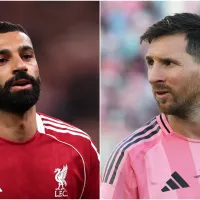It happens every season: the exodus of mid-level players from NWSL, citing a need to spend time with their families or get on with their post-soccer careers. You know, because they strung together a life while they played soccer but it’s not going to pay the bills forever, so it’s time for a real world job that pays a livable wage.
One of the latest non-WNT retirees from NWSL is Leigh Ann Brown nee Robinson. Brown is 29, so it’s not entirely unexpected that she would retire now. But her decision wasn’t necessarily about physically coming to the end of her shelf life as a pro baller, but, as per the press release from FC Kansas City, wanting “to start the next chapter of my life and let some of the younger players get the same chance I got seven years ago when I started playing professionally.”
There’s also players like Nikki Marshall, who retired at 26 before the 2015 season. Marshall was already working on the side part-time, but with her retirement was able to go full-time at a job that pays her all year round. There’s Nikki Washington, who also retired at 26 in 2015. Kate Deines, yet another 26-year-old at retirement, said “I have recently been presented with a job opportunity that will jump-start the next phase of my professional life outside of soccer.” Don’t forget 22-year-old Jazmine Reeves, who retired after a great rookie season in 2014 at the age of 22 in order to take a job with Amazon, or 24-year-old Courtney Jones who wanted to start her own business, or the latest, 25-year-old midfielder Amy Barczuk.
What are the main driving forces behind non-WNT players leaving the league while they’re still physically able to play? Look at what players say when they retire – it’s time for what’s next, I want a family, there was another job that was too good to pass up. Sometimes that better job may be the conduit towards starting a family as well since babies come with a range of expenses that would eat the league minimum salary of $6,842 in a single bite.
SEE MORE NWSL CONTENT:
• Should fans worry about the rich club poor club divide?
• Is the league ready for more expansion?
• How far can the USSF-league partnership go?
• Interview with NWSL Commissioner Jeff Plush.
On the job front, this current generation of players is doggedly putting one foot in front of the other while they claw towards a living wage. There’s been plenty of discussion about how to make NWSL more professional and profitable, tapping in to the national team zeitgeist and working its marketing and sales opportunities. But the league is fighting against the kind of climate where it’s not even politically expedient to back equal pay for female athletes, despite such support costing absolutely nothing. Getting more money into the league is going to be a long, hard slog short of Oprah deciding she’s suddenly a fan of women’s soccer.
Teams tend to do their best to supplement their players’ income, connecting them with private coaching sessions or placing them within their academy structure if the team has one. Players themselves hustle for extra work, especially in the offseason, running their own camps and creating their own brands.
Teams could go further, though, by implementing education programs for players who want to remain in soccer either as coaches or administrators. They could offer coaching certification or try to partner with US Soccer to at least subsidize the cost of classes. There could be work placement in the offseason to give players experience in soccer admin and help them network for job opportunities.
NWSL should also seriously consider an official partnership with Australia’s W-League, which has an offset calendar to NWSL and would basically allow a player to compete year-round, with a small gap between the end of W-League and NWSL preseason. Making it official and streamlining the process by which players can move between leagues by connecting with teams and obtaining work visas would give more players a chance to have income all year and avoid an very long offseason.
On the family front, there may be things that the league can do to help erode one of the larger barriers to women staying in the workplace. Family assistance by employers has much bigger implications for women due to a combination of pregnancy and the expectations in heterosexual couples for women to be the primary care giver, while the husband is the primary wage earner. Which is not to say that this is the reality of all female soccer players, but it is certainly a legitimate concern that mostly impacts women.
Let’s start with pregnancy, which will take a player out of a portion of the NWSL season no matter how well-timed. The Pregnancy Discrimination Act of 1978, which applies to employers with 15 or more employees, “forbids discrimination based on pregnancy when it comes to any aspect of employment.” That includes making assumptions about someone due to their pregnancy, such as they won’t be returning to work after the child is born, and prohibiting discrimination just because a woman might get pregnant.
According to NWSL spokesperson Patrick Donnelly, in terms of the Pregnancy Discrimination Act “we do comply with and follow all laws to which we are subject.” The league is also working to formalize its previously-informal policy on pregnancy and maternity leave. Donnelly could not comment on how long the league has been working to formalize this policy, but one might assume that the near-simultaneous announced pregnancies of two players on one team in Amy Rodriguez and Sydney Leroux might have given them a bit more momentum.
NWSL teams are certainly not typical employers in that the majority of their employees are female and pregnancy does legitimately impact their ability to perform their jobs, so compliance with the PDA more likely takes the form of not being able to terminate a player’s contract due to pregnancy, as well as giving the player a mandatory tryout once they return from pregnancy.
Then, once a player returns from pregnancy, teams can offer family-based incentives such as child care. Some teams do provide such incentives, such as Sky Blue FC. While not having a written policy about children of players, SBFC has provided child care services while players train and play. According to Vice President of Communications John Archibald, SBFC has also used programs that bring a player’s partner in market during the season so they can provide additional care for the child.
Players clearly understand that putting a part of their lives on hold and living paycheck to paycheck is currently a reality of being a pro female athlete. In an interview with Ella Masar, who was with the Houston Dash at the time, much of her discussion of helping NWSL grow was based on sacrifice. “If we want our kids to be able to play, then this is what we have to do,” she said. “We will bite the bullet so kids in five, ten years can actually get paid a wage where they’re not worried about stuff in the offseason.”
There are no easy solutions for making a three-year-old women’s sports league financially viable. Consider that it took 15 years for a single WNBA team to show a profit, and that was with the backing of then-NBA commissioner David Stern. Of course, the popularity of women’s basketball and women’s soccer have varied over the years, and the WNBA only has the Olympics, while NWSL gets the Olympics and the World Cup to help boost their image. But without a sudden influx of cash (seriously, has anyone called Oprah), high turnover among non-subsidized players is just the tough reality of being a pro women’s soccer player. Workaround measures will have to suffice in helping smooth over players’ lives while the league builds a more sustainable future.













